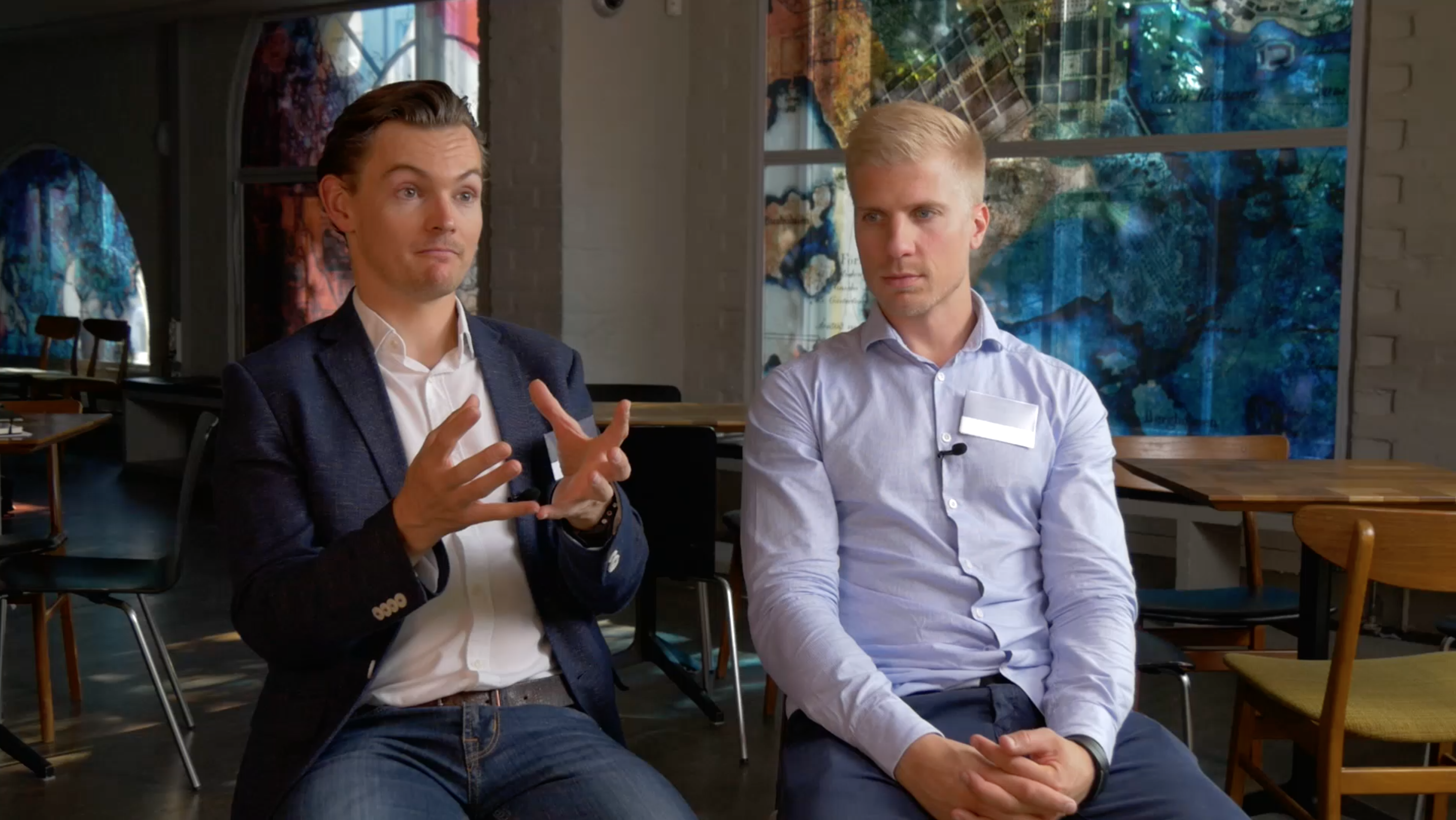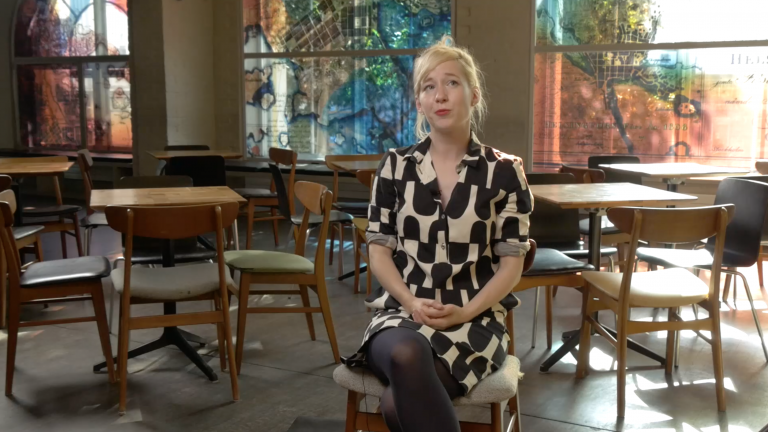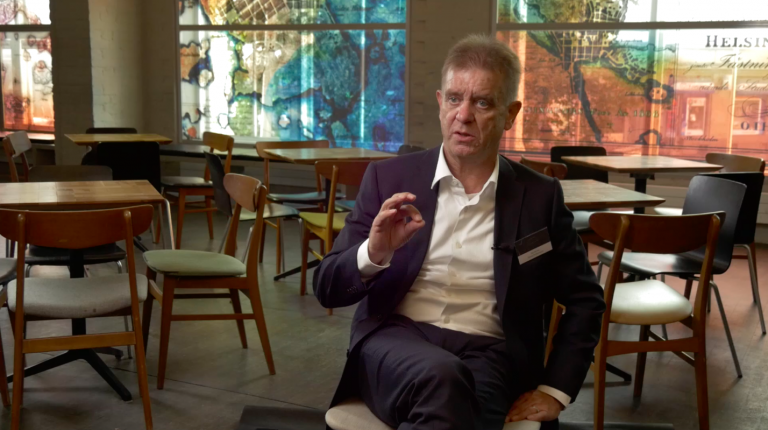High Performance Talks: James Hewitt & Heikki Huovinen

High Performance Talks is our weekly interview series focusing on improving performance through better health and wellbeing. In the course of ten weeks, you will hear fascinating stories from racing drivers, top executives, entrepreneurs, university professors and our very own Hintsa experts.
In episode 4 of our series Hintsa’s Head of Science and Innovation James Hewitt and Coaching Director Heikki Huovinen discuss how physical activity affects people’s cognitive abilities and provide some easy ways to boost your brain power.
What’s your take on the Hintsa model?
Heikki:
“We at Hintsa are here to help people learn more about themselves, help people find their real internal motivation, and what they want to do with their lives. When they know this better and better, it gets so much easier to make the active decisions with regards to all the six wellbeing elements that we at Hintsa are talking about.”
James:
“For me, the distinctive of the Hintsa approach is that we don’t impose something onto people. I think that typically in health and wellbeing programs, someone will do an assessment, they will find all the things that the person should be doing and they can even create a program integrating all those different practices, but the problem is that often it’s still imposed.
Those new ideas and new programs are imposed onto a life that’s already saturated. There’s no energy or space available to do anything new. Whereas with the Hintsa approach we start from the inside and work out. We start at the beginning and ask our clients: what do you really want to achieve; what are you doing now; and are the things that you’re doing reflecting what you really care about?
Then we frame the different new activities, the new behaviors, in the context of something they really care about, something they’re really motivated to change, a goal that they really want to achieve. That way, the change is much more sustainable.
I think the other element in that is, that the changes that we suggest, the ideas that we put in, as Heikki suggested, they come from within. We ask questions rather than giving answers, and help people find their own motivation. Also we encourage them to keep those changes quite small, because changing direction very slightly results in big changes in the end. Rather than having this big spike which then drops down very quickly.”
What advice for exercising would you give to busy professionals?
James:
“Simply moving more is really beneficial. Actually there’s some interesting evidence that suggests that even if you exercised really intensively for one hour a day – you go to the gym, you do your weights, or your spin class – if you don’t have any incidental activity, i.e. you’re sedentary, you can completely undo the positive benefits of that exercise.
So, actually if you don’t feel like you’ve got the energy to go to the gym or for a jog, that’s okay because the foundation should be the incidental activity. If you feel like you’re lacking energy or lacking time, simply pull lever one and find ways to move some more during the day. Go for a walking meeting rather than meeting in a sedentary way. Stand up from your desk, take a little walk around the office, go to the water cooler or perhaps start the day by going for a little walk. Just make sure you’re moving, don’t be sedentary for too long. That will have an incredible effect on your health and wellbeing and through that even on your performance.”
What about cognitive abilities? How does physical activity affect them?
Heikki:
“Simple interventions, even such as standing up from the chair is good for your cognition because it will instantly elevate the heart rate 10-20 beats and that will spike a little bit of adrenaline to your body and help the blood pressure stay constant. That’s an immediate boost for our system and for our cognition. In other words, your brain is better fuelled when the blood is pumping correctly.
When you exert your energy to physical activity, it actually enhances your cognition. In one interesting study, a group of 8–9-year-old kids was assigned a 70-minute after-school physical activity program for 9 months. And because of this intervention, their cognitive function was improved, much more than that of the control group. Their VO2 max, i.e. their maximal oxygen uptake level was improved, but also their cognitive functions. In addition, these kids who were more physically active actually had higher academic achievements and better grades.
There seems to be a clear connection between being physically active and then having higher cognition. But first we need to ensure that people have the energy to invest into doing the exercise, and then we can facilitate these good improvements, and pull up the lever and cause the changes that James explained earlier.”
And how does physical activity boost an individual’s energy levels?
James:
“Imagine that our bodies are effectively a signalling system and they are listening to signals from our environment. You can think about that environment in six elements: health, biomechanics, nutrition, recovery, mental energy and physical activity. Then imagine in those six elements you’ve got different levers associated with them. The physical activity levers are really powerful so when we engage in different types of physical activities, that sends a cascade of signals to our bodies which will actually upgrade our engine. And when we talk about upgrading our engine, we mean that we’re going to increase our body’s capacity to supply energy, and do it for all kinds of activities – thinking, moving, digesting food – everything requires energy.”
And how about the effect of physical activity and energy on the overall wellbeing?
Heikki:
“First, you need to really find the internal motivation and you need to build your environment right. Many times we actually are so low on energy, that perhaps the best thing actually is to just rest, recover and sleep. And after that come back stronger, and then do the exercise.
We need to learn from ourselves. How we are and how could we construct our days, our weeks, so that we have enough energy to invest into things that are important for us. Exercising is important for many of us, and we know all the benefits of exercising.”
James:
“One other thing that is really important to remember, is that energy comes from a single source. There’s a single inner resource, and our nervous system, liver, heart, and our brain, they all require the same kind of energy, something called ATP.
So, when we’re upgrading our engine through physical activity, and are able to supply more energy, all these demands are drawing from that same pool. So if you think about cognition, or emotions, or physical activity, actually all the things we do during the day, can all pull from that same energy source.
And it’s important to be aware of the fact that it’s ok and we all need to be flexible. If you have had a very demanding day, don’t force yourself to go to the gym. Maybe do something more regenerative? Because people don’t pull their fuel from different tanks. We’ve just got one ATP!”
What would be your one final advice for the readers?
James:
“I think my one piece of advice to boost energy would be to start the day by thinking about where you want to spend the energy that you have. Because before you can make any changes, you need to make some active decisions. And the best way to make some active decisions is to plan the decisions that you’re going to make! So my one tip would be: start the day by looking at where you need to spend your energy that day and spend it in a way that reflects what you really care about.”
Heikki:
“Yes, I think that first, you need to know who you are and where you want to be, and then do those things that help you be the man or woman that you want to be and go where you want to go. Everything else comes after that!”

Read previous
High Performance Talks: Linda Liukas

Read next
High Performance Talks: Dr. Aki Hintsa

Contact